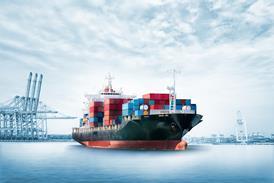Bolland plans clearout of brands as M&S profits rise
By Tim Danaher9 November 2010

Marks & Spencer is to rationalise its clothing sub-brands and reduce the number of branded foods stocked as new chief executive Marc Bolland refocuses the business around the core M&S brand.
Already have an account? Sign in here
Want to read more?
Register for LIMITED guest access
Register now© William Reed Ltd 2025. All rights reserved.
Registered Office: Broadfield Park, Crawley RH11 9RT. Registered in England No. 2883992. VAT No. 644 3073 52.
Website Terms | Privacy Notice | Cookie Statement | Cookie Preferences | William Reed and AI
Registered Office: Broadfield Park, Crawley RH11 9RT. Registered in England No. 2883992. VAT No. 644 3073 52.
Website Terms | Privacy Notice | Cookie Statement | Cookie Preferences | William Reed and AI
Site powered by Webvision Cloud



















